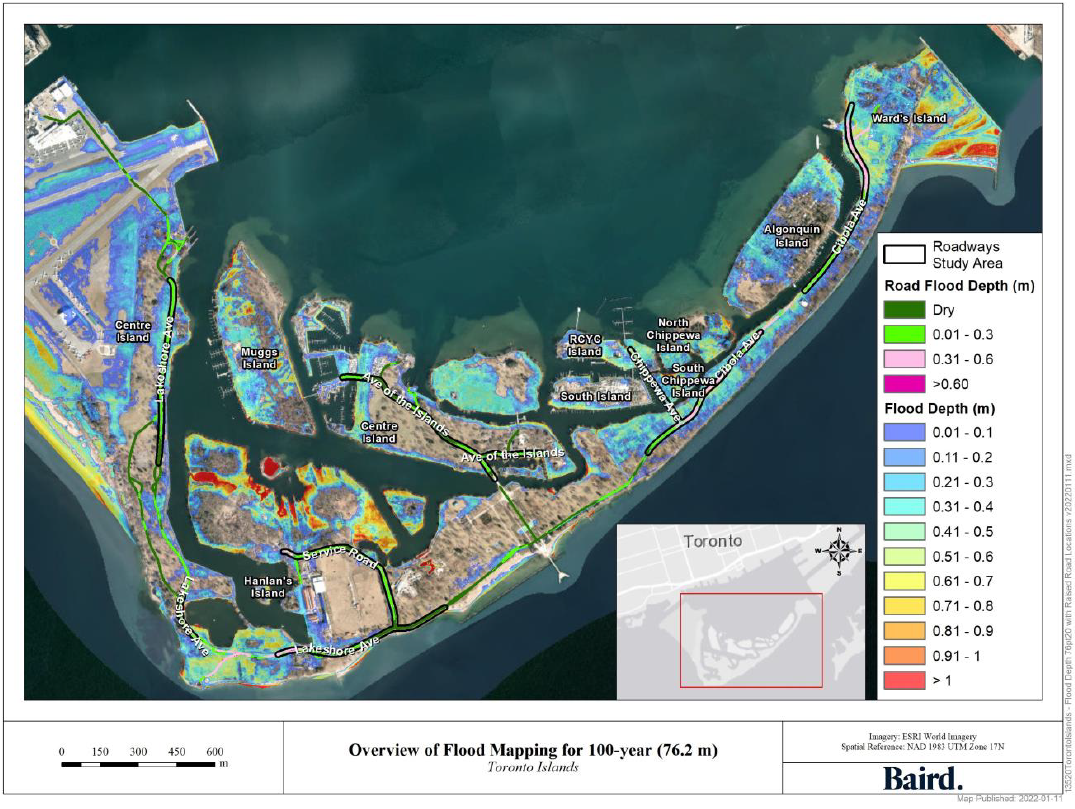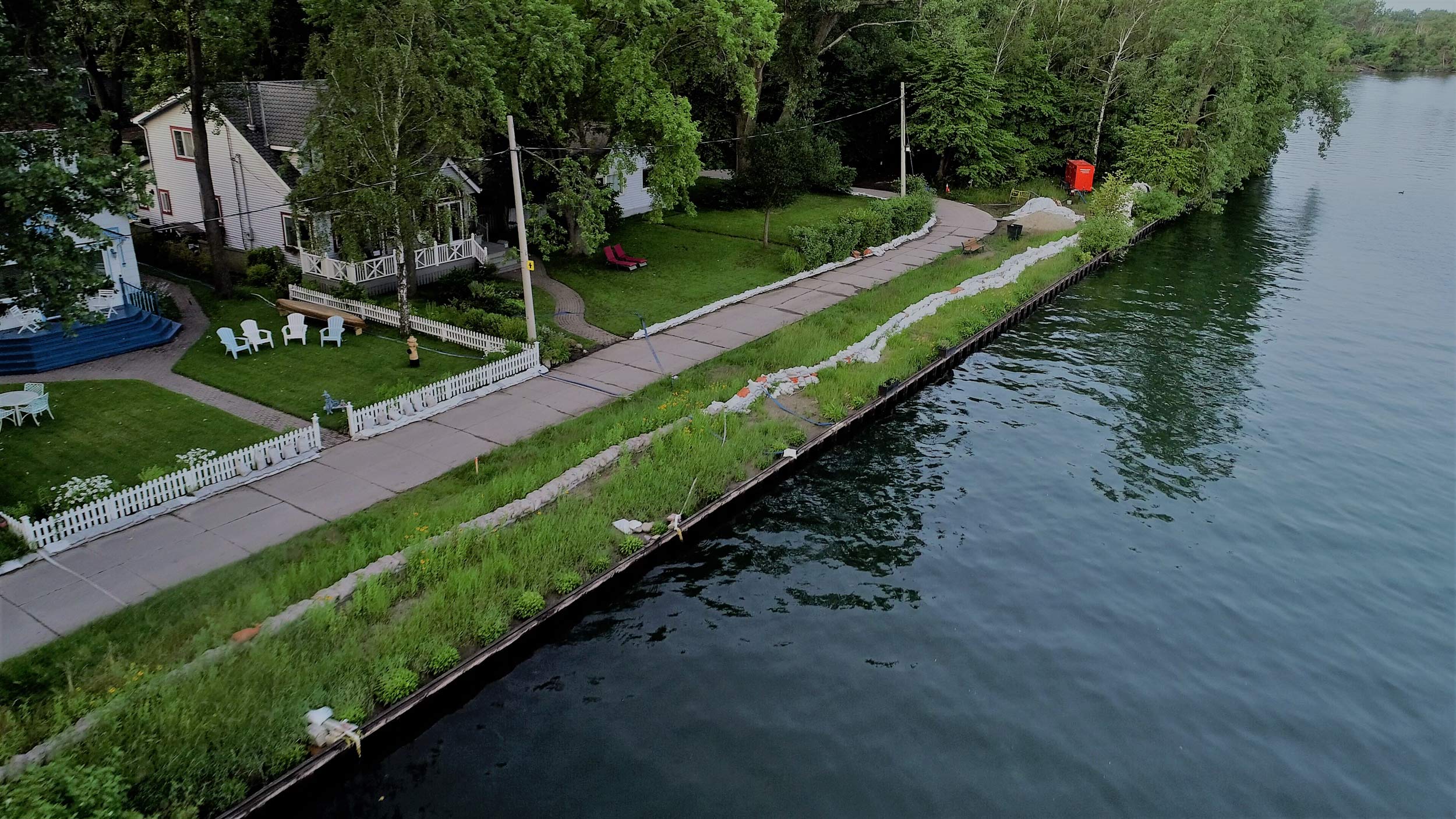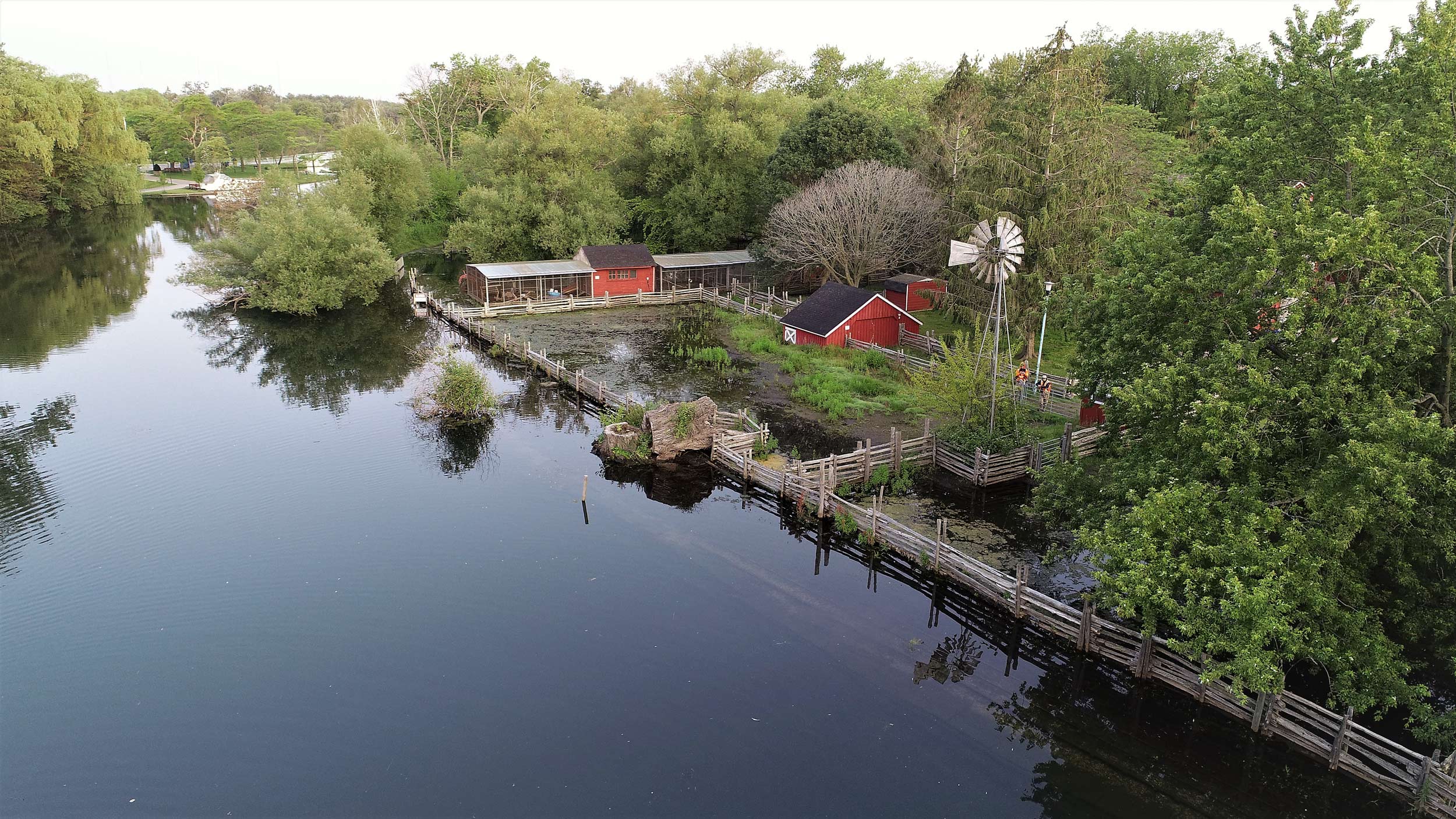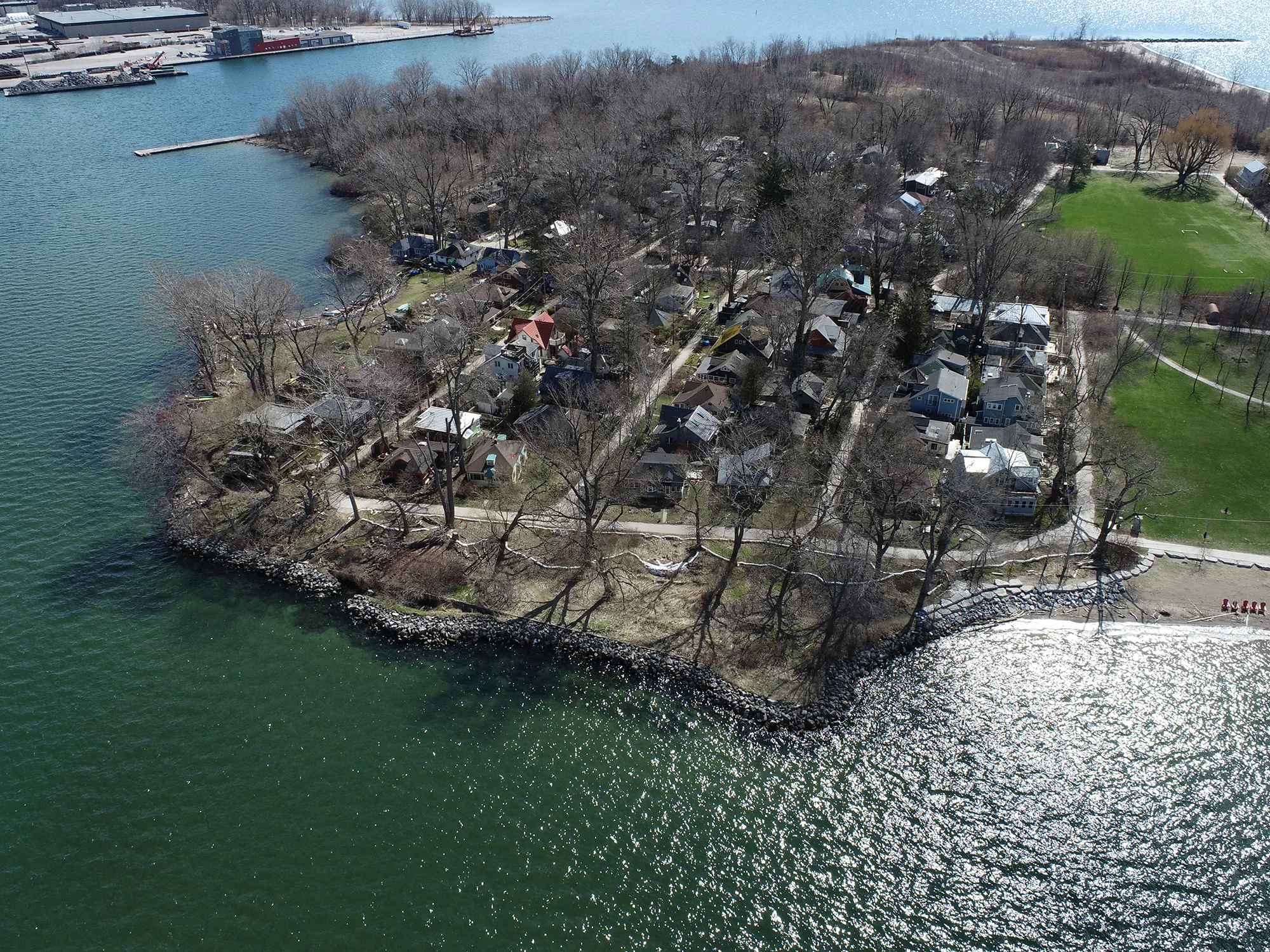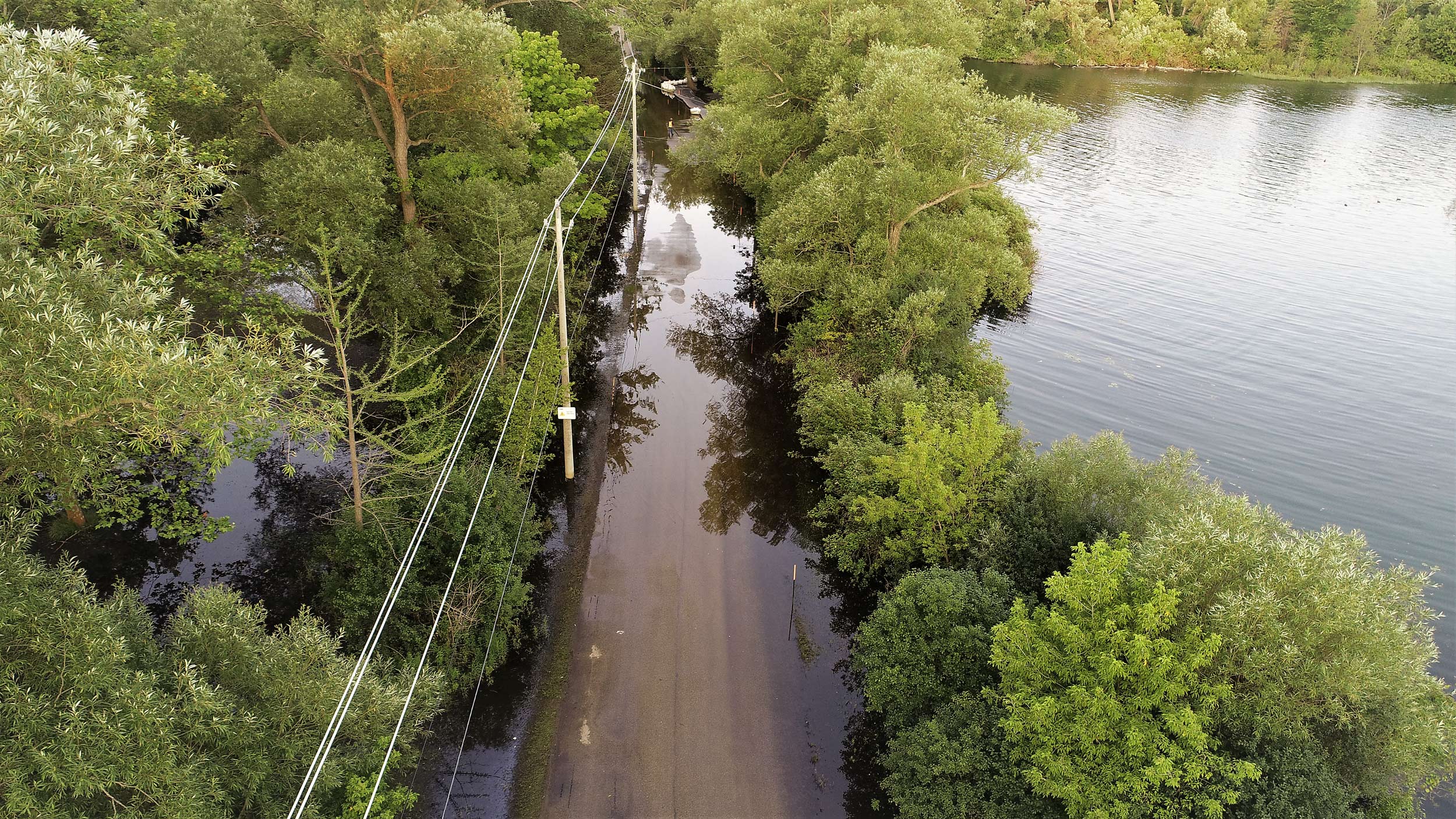In 2017, TRCA and the City of Toronto worked to prevent flood impacts by installing temporary mitigation measures, including over 45,000 sandbags, 1,000-meter bags, and a dozen industrial pumps. In 2018, temporary flood protection measures such as naturalized berms and sumps were installed in select locations across the park. When record lake levels were exceeded again in the spring of 2019, lessons learned from the 2017 event along with the temporary protection measures installed in 2018, helped reduce the impact of flooding despite higher lake levels. Although temporary mitigation measures can help to reduce the impact of flooding, a long-term solution is needed.
Due to the increasing frequency of high lake level events and the continued vulnerability of park space across the Toronto Islands, the City of Toronto has partnered with TRCA to undertake the Toronto Island Park Flood and Erosion Mitigation Project. The goal of the project is to develop long-term flood mitigation measures to protect the park and ensure that the Toronto Islands continue to be a safe and enjoyable place to visit, live, and work.
Previous Studies
Following the 2017 high-water level event, TRCA in partnership with the City of Toronto, undertook the Toronto Islands Flood Characterization and Risk Assessment Project. This study gave TRCA and the City of Toronto a better understanding of the type and location of flood risks at Toronto Island Park. The results of the study are being used to support the development of long-term flood protection measures for the Class EA.
As part of this study, flood depth mapping was developed. These flood maps show the locations across the park that are at-risk of flooding during different Lake Ontario water levels. Flood depth mapping for the 100-year flood event has been used for the Class EA to identify at-risk study areas and develop concept designs.
Emergency Works
The first phase of the project was launched in 2020 in the form of emergency works. This work was required in order to maintain essential park services while the larger Class EA planning process takes place. A declaration order was issued to the Ministry of Environment, Conservation and Parks (MECP) which allowed for work to take place in select locations on an emergency basis before completion of the Class EA.
As part of the 2020 emergency works:
- Over 500 m of roadway was raised along Lakeshore Avenue and Cibola Avenue to maintain emergency vehicle access
- A beach curb was installed at Ward’s Island to provide protection to the ferry terminal and ensure safe use
- Temporary flood mitigation measures were installed at the Island Water Treatment Plant to help maintain plant operations
Class Environmental Assessment Process
This project is being planned in accordance with Conservation Ontario’s Class Environmental Assessment (Class EA) for Remedial Flood and Erosion Control Projects. This is a collaborative process with the public and other stakeholders which allows for community feedback and participation.
As part of the Class EA process, several alternative solutions (known as concept designs) will be presented. Each alternative undergoes technical evaluation as well as public review and consultation in order to identify the preferred solution. Concepts are typically ranked against each other, as well as the ”Do-Nothing” approach, in order to understand their potential impacts. This Class EA will include the development of different sets of alternatives and the selection of a preferred solution for each of the study areas included in the project.
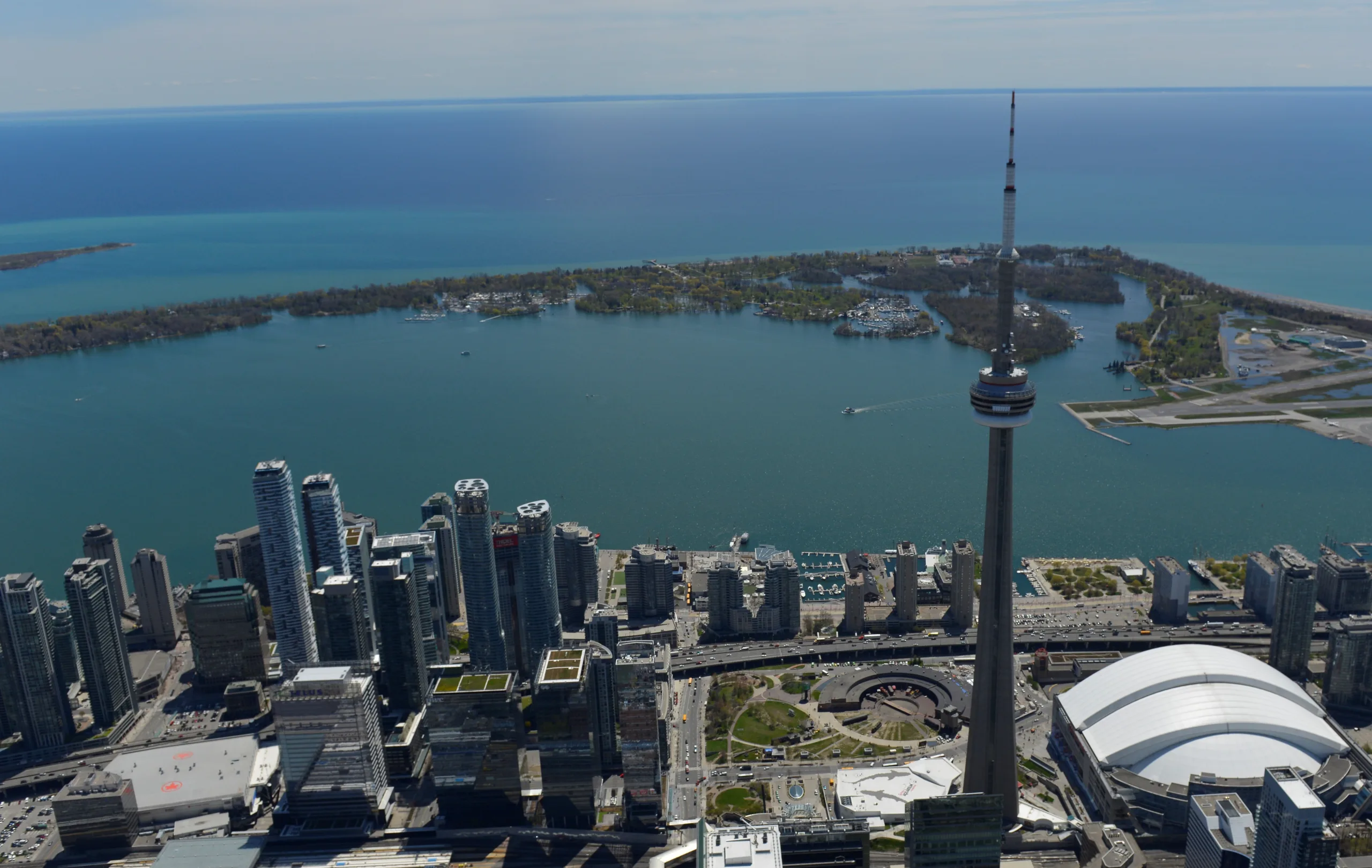
The following items will be completed as part of the scope of work:
- Collect and review baseline environmental data
- Develop three (3) alternative solutions (concept designs) for each of the study areas
- Evaluate the environmental impacts of the alternative solutions and identify the preferred alternative for each study area
- Host public engagement events to receive comments and feedback on the proposed solutions, including Public Information Centres (PIC)
- Prepare and file an Environmental Study Report (ESR) that documents the Class EA process and reviews the impacts of each of the preferred alternatives
This study is being completed in coordination with the Toronto Island Park Master Plan. To learn more about the Master Plan that is being led by the City of Toronto,
please visit: www.toronto.ca/islandmasterplan
Engagement
Round 1 : What we heard
We heard from you! The first round of public engagement took place in Winter 2022. As part of this phase, we asked for your input on the alternative concept designs that were proposed. Major themes in the comments we received are highlighted below:
• Protect the natural environment
• Maintain the park character
• Include multi-functional designs
• Ensure public safety
• Consider existing use and operations
• Balance impacts to various communities
Solutions that aligned with these themes were generally preferred. Your input was used to update the alternative concept evaluations. Based on the feedback we received, the preferred solutions have now been identified and refined to better meet site and community needs.
To learn more about how public feedback was incorporated into the final solutions, make sure to check out the "What We Heard" section located next to each concept solution throughout the Open House.
Round 2 : Where we are now
The second phase of engagement is focused on reviewing the preferred solutions that have been selected for each site. This involves examining potential impacts of the selected concepts. As part of this examination, a detailed environmental screening has been completed for each of the preferred solutions. The screenings rate the potential impact of the solutions against five environmental categories: Physical, Biological, Cultural, Socioeconomic, and Engineering/Technical.
The purpose of this analysis is to identify whether a solution is expected to have a positive or negative impact as well as how large the impact will be. In instances where an impact may be negative, opportunities to reduce this impact will be reviewed.
As part of the second round of engagement, we are looking for your feedback on the environmental screenings to ensure potential impacts consider a full range of public interests.

